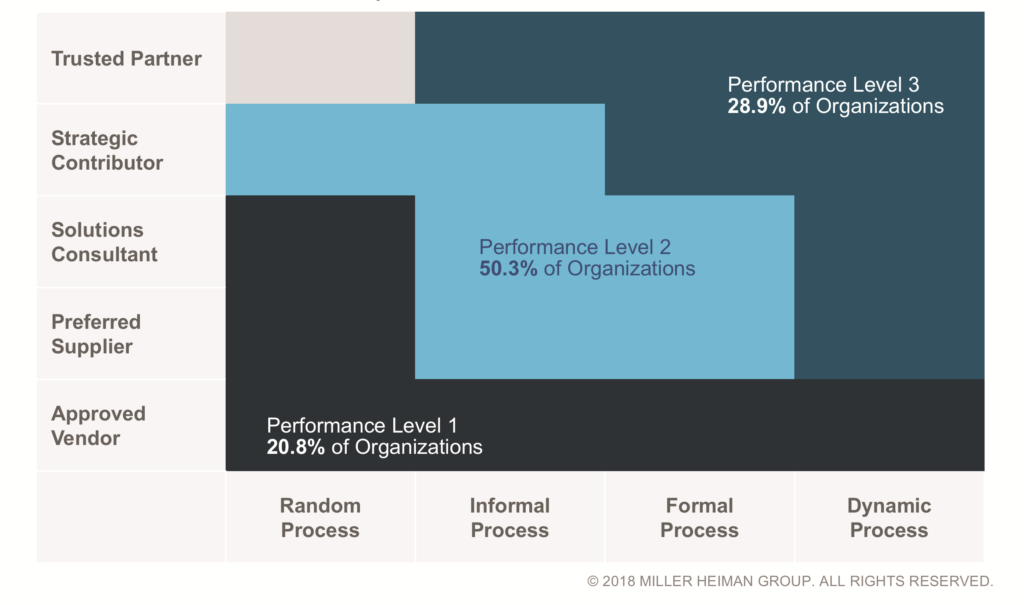The 3 Traits Shared by Successful Sales Organizations

If you’re the average global sales organization, you’re achieving 94 percent of your sales revenue goal. But sellers shouldn’t rest easy quite yet.
The “2018-2019 Sales Performance Report” from CSO Insights, the research division of Miller Heiman Group, revealed that this good news wasn’t due to an increase in sales performance. Only 54 percent of salespeople made quota, and sales teams were less effective at 15 of the 16 common sales activities used to measure sales performance.
To compensate and meet revenue goals, sales leaders plug the dam by relying heavily on their strongest sellers or hiring additional sellers. They also depend heavily on existing business — new customers accounted for less than 30 percent of total revenues in 2018.
So, what should sales leaders focus on to turn this picture around and align with the highest-performing companies on CSOi’s Sales Relationship Process Matrix (below)? (The SRP Matrix is a framework for assessing sales effectiveness based on two critical elements: the depths of relationships organizations have with their customers and the extent to which the sales process is formalized and deployed.)

The study found the highest-performing organizations share three compelling traits:
- A primarily customer-centric culture
- A sales process dynamically aligned to the customer path
- A sales team that meets or exceeds expectations in providing insights and perspective
To achieve success in 2019, sales organizations must focus on the customer. Let’s break down each of these points to see why they matter.
Embracing a customer-centric culture
The highest-performing organizations (Level 3) are twice as likely to have a customer-centric culture as Level 2 organizations shown in the matrix above. That focus is more important to success than having a formal sales process.
The takeaway: Having a customer-centric culture leads to both higher levels of relationship and higher levels of process.
Aligning sales process to the customer’s path
About one-half of Level 3 organizations in the matrix above reported customer alignment throughout the sales journey, including awareness, buying and implementation. While aligning to the customer path has always been important, today’s buyer sees a smaller role for sellers throughout their buying journey. This makes it critical for sellers to express their relevance every step of the way.
The takeaway: Sellers must map their actions to the buyers’ processes, rather than the reverse. For example, what is the seller doing to help the customer make the decisions they need to make at each point in the process?
Providing insight and perspective
The highest-performing organizations were also much more confident in their sellers’ ability to provide insights and perspective to customers. Sixty-five percent of Level 3 organizations meet or exceed expectations in providing customers with thought leadership and perspectives to advance their thinking, while just 26 percent of those in Level 1 do the same.
As buyers gain access to more information and resources, they see sales people as less important in guiding their business decisions. Sales organizations that retain existing customers and close new business will be those that provide perspective and become trusted partners.
The takeaway: Ensure your sellers have everything needed for a critical element of their sales approach: the ability to provide unique perspective. Arm them with data, insights or information that helps the buyer think differently or see their challenges in a new light.
To succeed in 2019, sales leaders must treat customer experience as a broad, holistic concept practiced throughout the company, not just in sales or marketing.
Seleste Lunsford, Chief Research Officer of CSO Insights, the research division of Miller Heiman Group.
Get our eNewsletter
Get the latest sales leadership insight, strategies, and best practices delivered weekly to your inbox.
Sign up NOW →